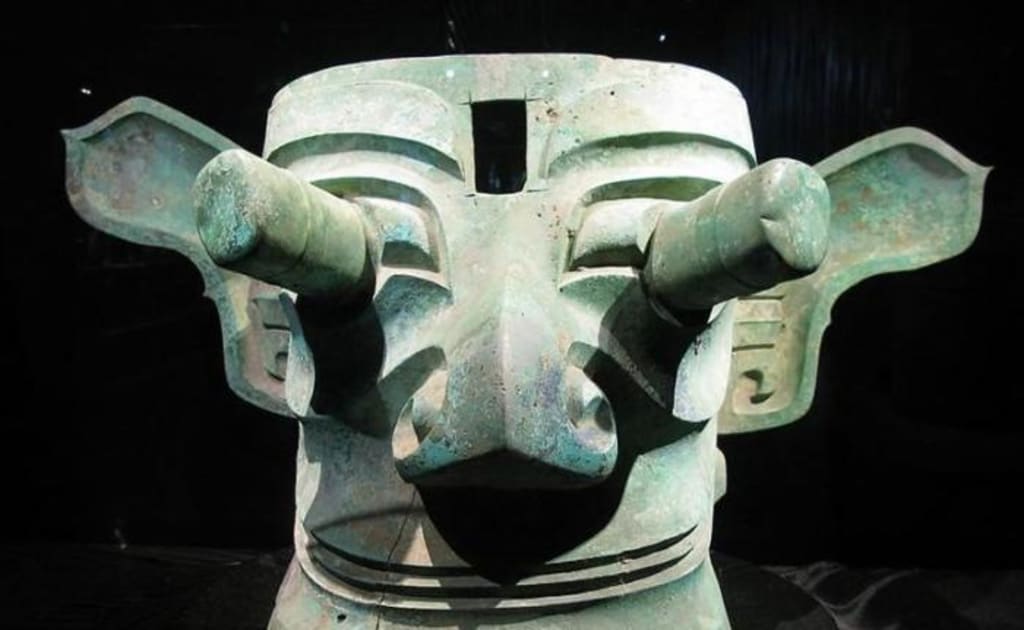What the ancient Shu people of Sanxingdui ate, as evidenced by archaeological excavations, and what we often ate as their staple food
The ancient Shu people of Sanxingdui ate the same staple food we often eat

What was the food of the ancient Shu people at Sanxingdui? Archaeologists were obsessed with this topic until the successful archaeological excavations finally proved that the ancient Shu people had already been eating rice. What was this all about? If you want to know, let me reveal to you.
The Sanxingdui site is located on the banks of the Yuzi River in Guanghan City, Sichuan Province, and is a mysterious and ancient site of an important human civilisation, about 3,000-5,000 years old, and is by far the largest, longest-continuing and most culturally rich site found in China, and has been called "one of the greatest archaeological discoveries of mankind in the 20th century ". The Sanxingdui civilisation site has unearthed numerous cultural relics, the quality and style of which are as fine as any ancient site in the world, and is a valuable cultural heritage shared by the people of the world.
The re-emergence of the Sanxingdui civilisation in the world has allowed future generations to see the prosperity of the ancient state of Shu and to feel the endless charm of ancient culture. However, one problem has always been that, as a superb site, it is rich in excavated artefacts, and this has prompted people to look into the pits of the site and compete to see all kinds of strange and valuable treasures. But while we look at the treasures, we also forget the old adage that 'food was the order of the day', and what was the basic life of the ancient inhabitants of Shu, who created such a glorious civilisation? What would have been the staple of their diet?
It is worth mentioning that phytoarchaeology has been an important topic in the research process to unravel the mystery of the Sanxingdui site. Through precise measurements and sample selection, archaeologists have used carbon-14 dating to accurately analyse the types of crops and distribution structure of the ancient Shu Sanxingdui civilisation. Prior to this expedition excavation, scholars from the Chengdu Institute of Cultural Relics and Archaeology, had conducted a nine-year-long botanical archaeology of the pre-Qin sites in the Chengdu Plain, among other places, specifically looking for traces of questions about the food use of the ancient population. It has to be said that, over the course of several days, the archaeologists have defied the odds and overcome difficulties to find life in the midst of many difficulties, searching for the deeply buried seeds left behind by their ancestors on the earth.
After a series of efforts, archaeologists finally found important clues when they used flotation analysis to locate charred grains of one of the main grains of the ancient Shu people, namely corn (millet) and rice, on the land. The carbon 14 test for millet (millet) was significantly older than that for rice, and the data showed that rice's was 4,000 years old, while millet was around 5,000 years old. This means that the ancient Sanxingdui people used to eat millet for a time, until rice came along later and made it a staple food.
Rice is one of the grains we often see in our daily lives. It is the fruit grain of ripe rice, a food made after the rice grain has been cleaned, hulled, milled and finished. As a common staple food, rice is extremely popular, with nearly 64% of the nutrients and over 90% of the nutrients required by the human body, as well as being a staple food for people in most parts of China, with relevant data showing that half of the world's population currently eats rice exclusively as a staple food.
At the same time, rice also has certain medicinal effects. According to Chinese medicine, rice is sweet and flat in nature, and has the effect of tonifying the middle of the body, strengthening the spleen and stomach, benefiting the essence and strengthening the will, harmonising the five organs, opening up the blood vessels, clearing the ears and eyes to stop irritation, quenching thirst and stopping diarrhoea, and is known as "the first of the five grains", so regular consumption of rice is beneficial to the body.
At this point, a question arises: since archaeologists have discovered ancient rice, what are the differences between ancient rice and modern rice? For this reason, archaeologists have listed the following.
The difference in the size of the rice grains: starting with the shape of the remains of the rice grains found, the archaeologists determined that the ancient rice was slightly smaller, even only about three-quarters of the volume of the average modern rice. The experts believe that the reason for the smaller size of the ancient rice grains actually stems from the constraints of the growing conditions, where the soil was poor and very arid, and where fertilisation and care were not comparable to modern scientific agricultural management, resulting in the relatively small shape of the rice fruits.
The taste of the rice grains is different: although the rice itself was not managed properly, one thing we have to admit is that in ancient times the rice was completely "green and pollution-free", with no pesticides, fertilisers or agricultural agents of any kind, and all the rice was subjected to nature's frost and rain, so its taste must have been fresher, softer and more glutinous. The taste of the rice must be fresher, softer, sweeter and tastier.
The appearance of the rice grains is different: it is no secret that the degree of domestication of wild rice in ancient times was extremely low, and compared to modern rice, which has been domesticated for thousands of years, there are deficiencies in the fullness and uniformity of the grains, and their appearance is particularly uneven, not to mention their yield.
The ancient people were able to eat rice thanks to the hard work and wisdom of the ancient farmers, but "those who are covered in roses are not sericulturists", the rice harvest was small and naturally became the exclusive property of the noble chiefs and sorcerers of the ancient state of Shu, and the farmers were lucky to have a half-full stomach.
About the Creator
Vicky
The world is so wonderful, let's get to know the world together!
Enjoyed the story? Support the Creator.
Subscribe for free to receive all their stories in your feed. You could also pledge your support or give them a one-off tip, letting them know you appreciate their work.






Comments
There are no comments for this story
Be the first to respond and start the conversation.